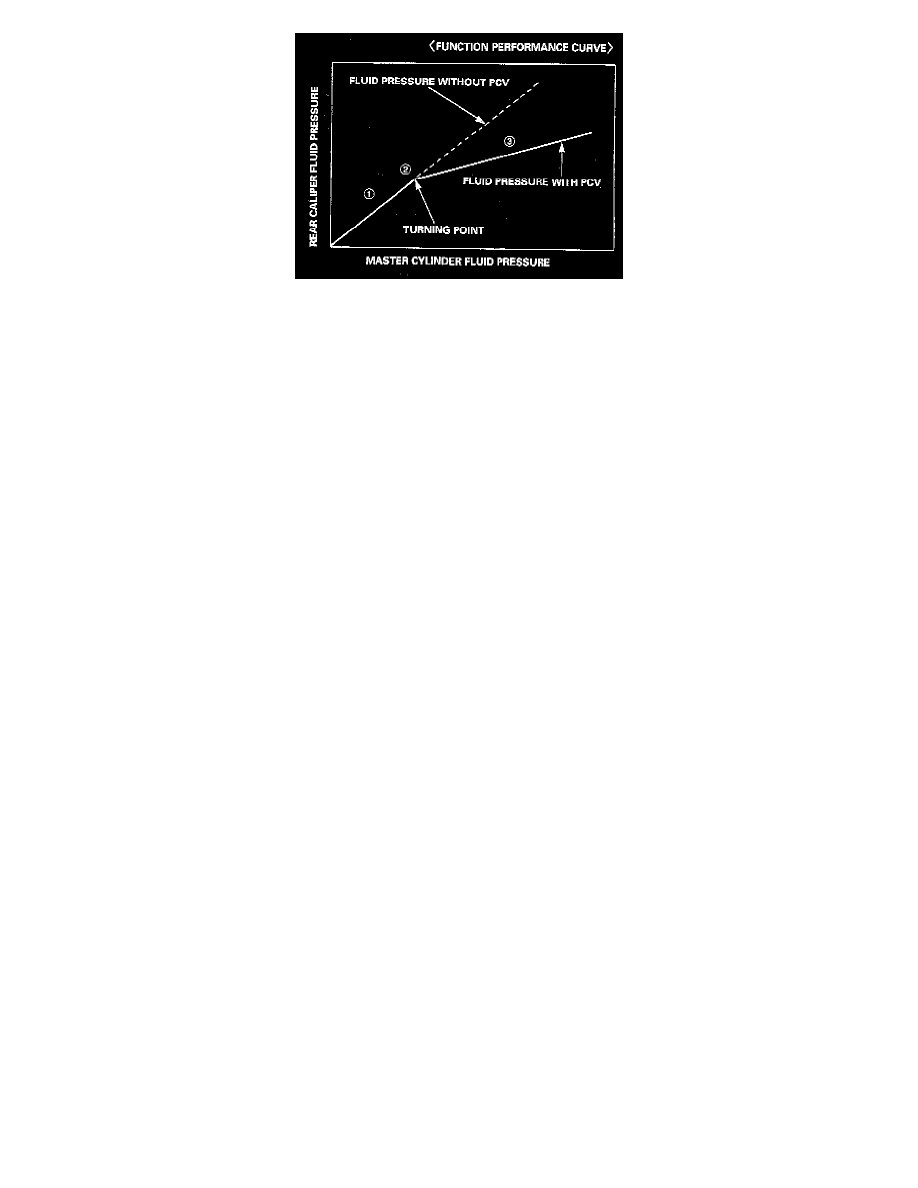Accord LX Sedan L4-2156cc 2.2L SOHC MFI (1997)

Turning Point
TURNING POINT
The cut valve seat in the rear brake system has a shoulder between sections A, and B. Section A, where pressure from the master cylinder is
applied, has a smaller diameter than section B, where pressure from the rear brake caliper is applied. This design provides the proportioning
control valve function as follows.
Master Cylinder Pressure Below
When the fluid pressure from the master cylinder is below the turning point, the cut valve seat is pushed by the spring force and the cut valve is
open. Therefore, the fluid pressure from the master cylinder is transmitted to the rear brake caliper side. Under these conditions, fluid pressure
from the master cylinder is equal to the pressure to the rear brake caliper, but because of the diameter difference between sections A and B, the
force on the cut valve overcomes the spring force, moving the cut valve seat toward the cut valve slowly.
Master Cylinder Pressure Exceeds
When the fluid from the master cylinder exceeds the turning point, the fluid pressure from the master cylinder rises, while the pressure to the rear
brake caliper remains at the turning point value. As a result, the cut valve seat moves away from the cut valve and the cut valve opens. The passage
between the master cylinder and caliper opens momentarily, but it is blocked again because the fluid pressure to the brake caliper rises, and the cut
valve seat moves to close the cut valve. As described above, when the pressure in the master cylinder is above the turning point, the cut valve seat
reduces the pressure in the rear brake caliper to the prescribed amount by repeating this process.
Rear Brake Caliper Reaches
When the fluid pressure to the rear brake caliper reaches the turning point, the cut valve is closed by the cut valve seat, blocking the fluid passage
between the master cylinder side and rear wheel cylinder side.
